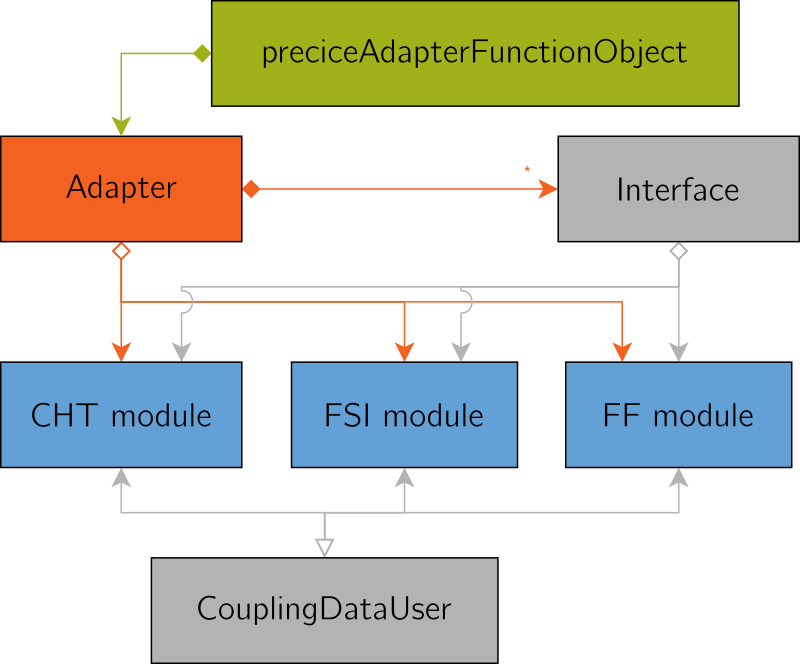Architecture
The OpenFOAM adapter separates the core functionality (e.g. calling preCICE methods) from the problem-specific methods (e.g. accessing fields and converting quantities). The latter is encapsulated into “modules”, which add only a few lines of code in the core. The following, simplified UML diagram gives an overview:

While in the beginning the adapter only included a module for conjugate heat transfer, a module for fluid-structure interaction and a module for fluid-fluid coupling have been added since then.
Starting points
In case you just want to couple a different variable, you need to create a new
coupling data user class in the preciceAdapter::CHT namespace or in a new one.
Then you need to add an option for it in the configuration part
to add objects of it into the couplingDataWriters and couplingDataReaders
whenever requested.
There are some NOTEs in the files Adapter.H, Adapter.C, CHT/CHT.C, and CHT/Temperature.H to guide you through the process.
Note: make sure to include any additional required libraries in the LIB_LIBS
section of the Make/options. Since the adapter is a shared library,
another missing library will trigger an “undefined symbol” runtime error.
See also the notes and discussion in issue #7: Create a module for fluid-structure interaction.